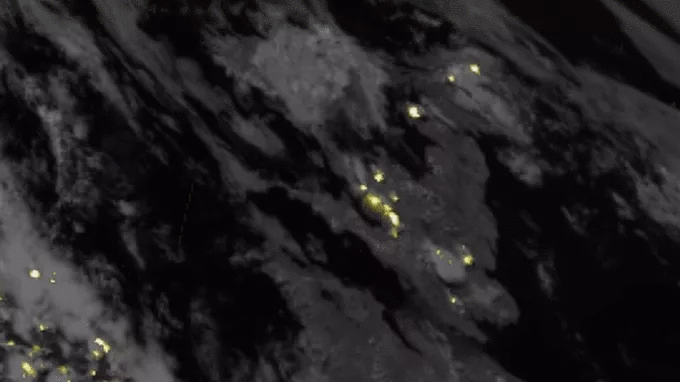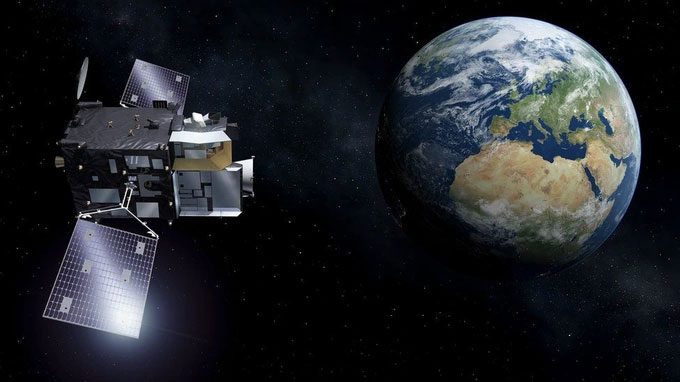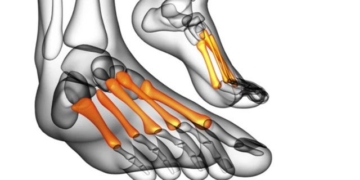The camera mounted on Europe’s new weather satellite has captured an impressive moment when thousands of lightning strikes occurred simultaneously during a storm in Europe.

Eumetsat-12 is the first European weather satellite capable of monitoring lightning activity in the sky. (Photo: Eumetsat).
The image above was taken by the Meteosat-12 satellite, operated by the European Organization for the Exploitation of Meteorological Satellites (Eumetsat). In the photo, the cameras mounted on the Meteosat-12 satellite captured an impressive moment when thousands of lightning strikes occurred simultaneously during a storm in Europe.
It is known that the satellite is currently located about 36,000 km from Earth, in a geostationary orbit. This altitude is ideal for weather forecasting satellites, as their speed matches the rotation of the Earth.
This allows the satellites to maintain a continuous view of a portion of the globe, enabling meteorologists to observe how weather phenomena evolve in real time.
Meteosat-12 serves as the first satellite in a series of six new weather satellites from Eumetsat, designed to enhance Europe’s resilience against weather-related disasters caused by climate change.

Illustration of the Meteosat-12 satellite operating in Earth’s orbit. (Photo: Eumetsat).
The device named “Lightning Imager” equipped on the Meteosat-12 satellite includes four cameras. Each camera can capture 1,000 images per second, both day and night, detecting even a single lightning strike occurring faster than the blink of an eye.
The satellite’s observation range allows the device to detect flashes in the atmosphere across Europe, Africa, the Middle East, and part of South America.
According to Eumetsat, previously only satellites from the National Oceanic and Atmospheric Administration (NOAA) in the United States had the capability to use cameras to capture images of lightning. Now, Meteosat-12 is the first European satellite to provide a similar feature.
The aim of this capability is to improve forecasts of extreme weather events that may occur over a large area.
“Severe storms often occur before sudden changes in lightning activity,” said Phil Evans, Director General of Eumetsat, in a statement.
“By observing changes in lightning activity, meteorologists can forecast severe storms before they form.”
Data from the satellite also allows airlines on transatlantic flights to track weather developments, improving safety levels during flights.


















































